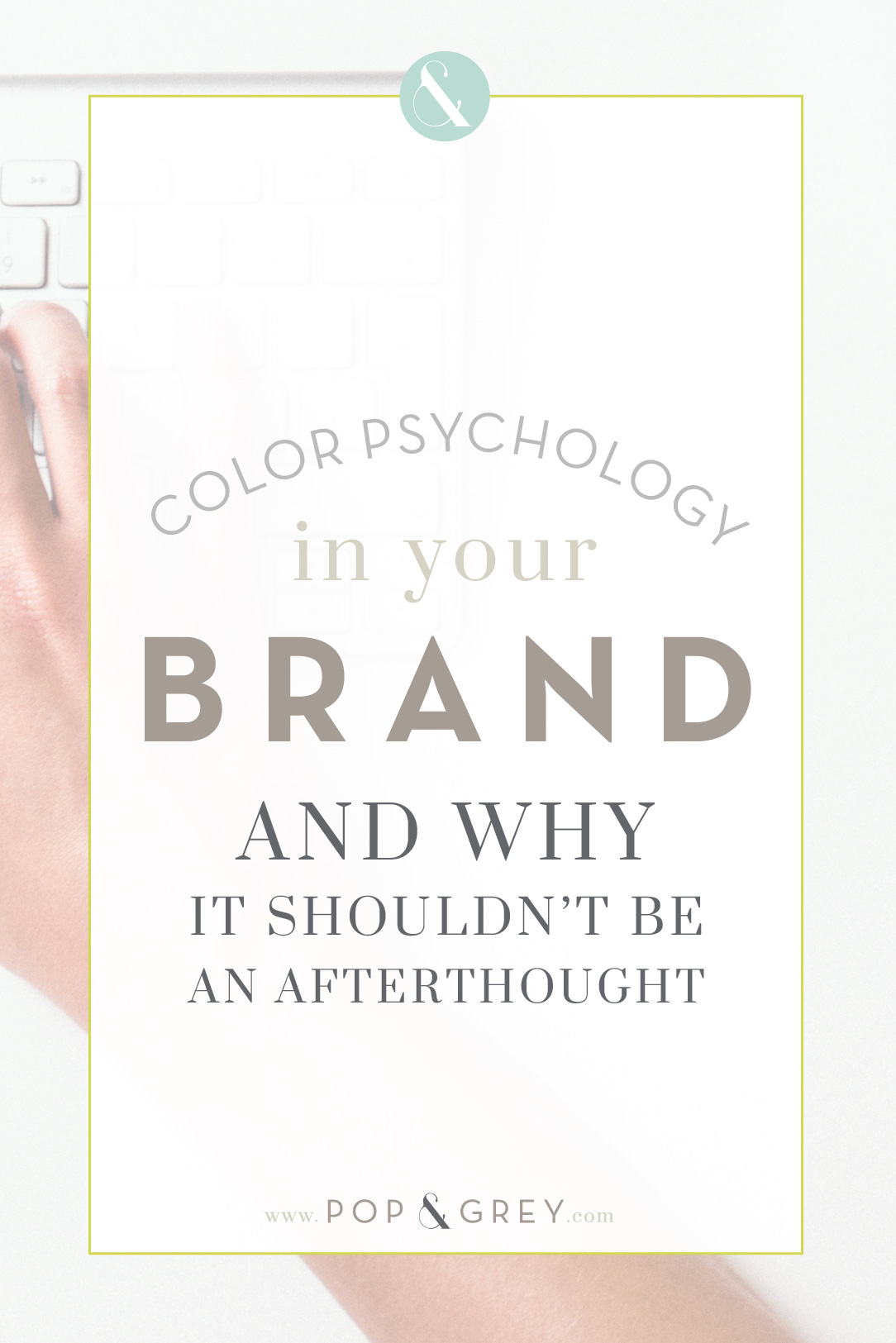
Color psychology is one of the most fascinating, and often overlooked, aspects of design. It’s the first part of a brand identity that I mull over when creating a mood board (what I use to build the foundation for the feel of your visual brand), but the last to be implemented in the design.
Why?
Because not only is color psychology a vital part of your brand design, but color palettes are also greatly affected by the design style and graphic elements surrounding them. This is why going through the positioning process is oh-so-important before beginning any kind of design. I can create color palettes that appeal to my clients all day long…no really, it’s one of my favorite things to do! The hard part, though, is discerning what colors will most move their audience and urge them to feel a connection with the brand.
So if you remember nothing else from this post, here is the bottom line to burn into your memory:
Your brand colors may not be your favorite colors, even if you are building a personal brand.
*pauses for effect*
Ok, while you unwad your panties, let me explain.
You are not your audience
Creative entrepreneurs get really wrapped up in “but my favorite color is pink, and my brand is representing me, so please show me my lovely pink logo.” Yes, your brand colors should represent what you stand for, and they should be something you are proud to display.
But here’s the kicker: even if you have a lot in common, you are not your target audience.
And the most important idea I try to teach creative entrepreneurs is that their audience is everything. Sometimes you have to move out of your comfort zone to appeal to someone that’s a little different than you, and that’s ok.
color meaning is relative
No color has one cut and dry meaning, despite what Google tries to tell you.
All colors have a range of emotions related to them and most can veer in drastically different directions based on either their context, the shade of your chosen colors or even the amount used of each color. Like with anything else, you can’t break the rules until you know them and understand why. For example, in some contexts, the use of red can be energizing and positive while in others, it can be aggressive and negative. An airy aqua blue certainly doesn’t emit the same feeling as strong, navy blue. You have to be careful to pay attention to the context of your colors and choose shades that support the particular aspect of each color that you want to highlight.
Choosing a color is easy…choosing the shade is where it gets really tricky. Think back to your elementary school art class days. Remember when you ran out of purple paint and learned for the first time that you could just mix a little blue and red to make more? Well, if you are heavy on the blue, your purple evokes a sense of strength and vision, while if you steer more toward the red, your purple gains warmth and energy from the red. One purple does not equal another, and being very particular about the shade of your chosen color is a smart business move.
Get it now? Good! Now Step Behind The Curtain For a Hot Minute
I choose an overall color palette for the mood board, but when it comes to designing the first draft, I begin all of my logo designs in black and white. I’ve found that because color is so powerful, I spend so much time focusing on which colors to use that I lose the forest for the trees. While I love the power of color, I don’t want to sacrifice the design fundamentals because I’m too focused on choosing that perfect pop.
When I begin in black and white, I can make sure that the composition and mechanics of the design are pixel perfect before polishing it up with flawless shades. I love seeing the huge impact it makes when taking a logo from black and white to color. It’s like a treat I save for last, usually followed up by a little happy dance at my desk.
So Remember
Define your audience. Define their problem and what emotions they need to feel to get past it. Then choose colors in shades that support those feelings. And then learn a really good happy dance.


